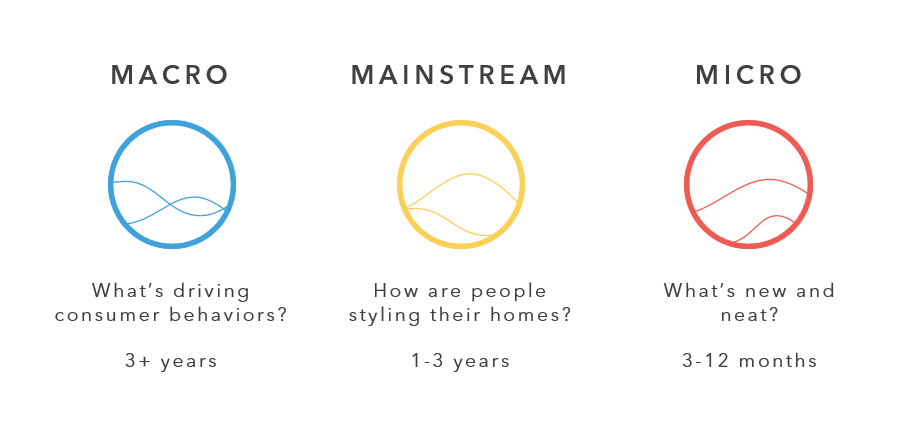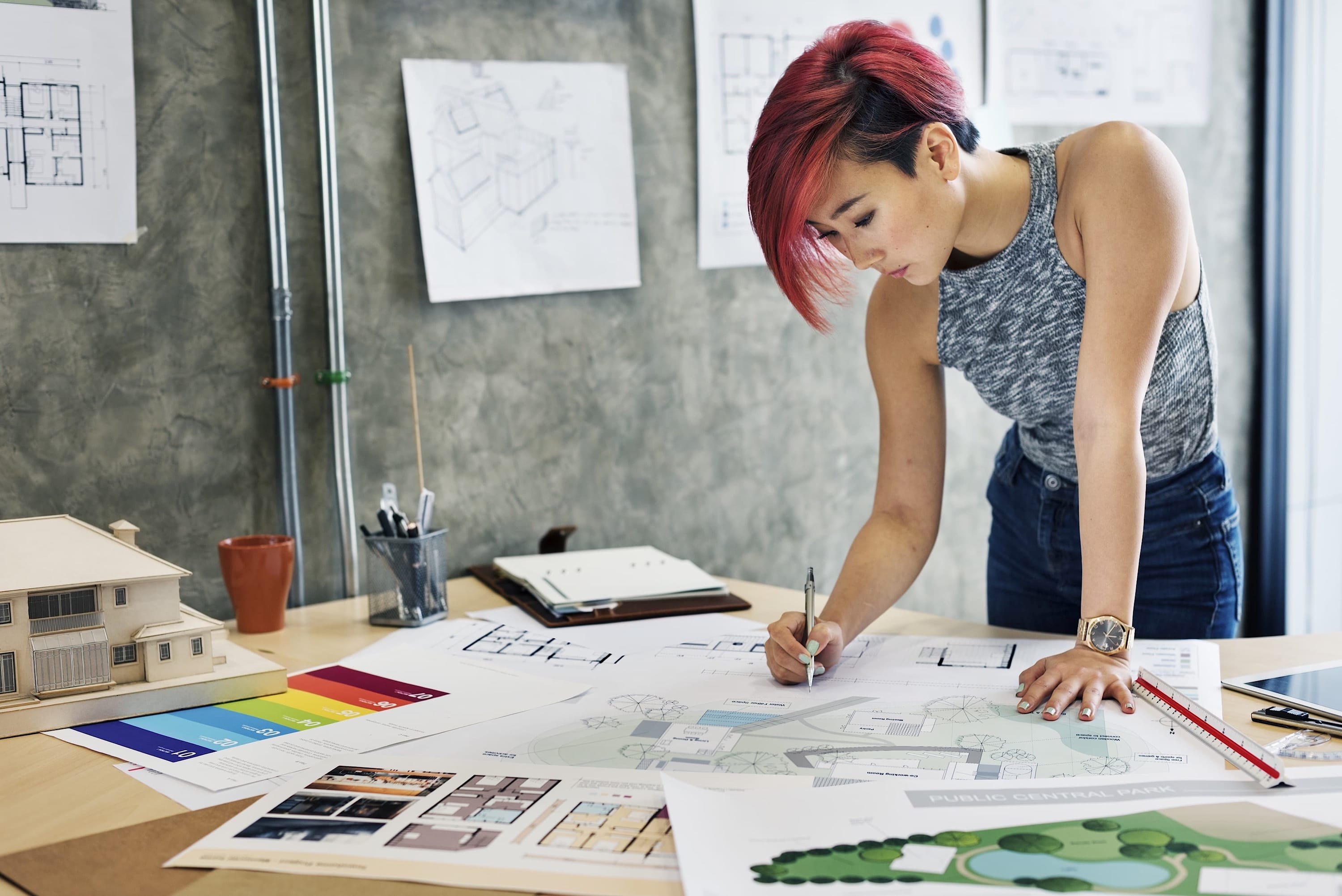“I’d love to see a show of hands,” said Jenn Tuetken. “How many of you are interested in learning more about what design trends are happening today?”
The industrial designer from Pella’s Strategic Innovation team and leader of the Pella trends team posed this question to an audience of builders, architects, and interior designers from around the world at the Design Studio during the 2019 International Builders’ Show in Las Vegas. With most hands shooting into the air, it was clear there was interest in trends.
“Great! Now let me ask you this,” she said. “How many of you feel that you have a repeatable process to clearly identify and track trends at your company?”
With hands hesitantly falling, she encouraged them because this was exactly what they were going to learn about at the session.
The bigger picture
Change is inevitable within the design community and consumer habits. In today’s world of inspirational images and social media platforms, it’s easy to get bogged down, overwhelmed, and frustrated when trying to incorporate trends to evolve your brand, products, and company. However, if you can take a step back to evaluate the bigger picture, there is a way to use trends to your advantage.
At Pella, the team divides what its members are seeing in magazines, blogs, and trend reports into the 3 M’s of trends: macro, mainstream, and micro. Macro trends are culturally driven and can last anywhere from three to 10 years.

A mainstream trend is typically predicted to stay around for one to three years and can drive a change in aesthetic preferences within the home. A micro trend typically has three to 12 months of staying power, which can mostly be seen through color and finish choices and seasonal selections, like fashion.
Macro trends: leverage a STEEP analysis
Start with STEEP: Social, Technological, Economic, Environmental, and Political. As one of the most widely used business strategy tools, a STEEP analysis with your team can help everyone visually understand the complexity of your external market influences and what’s likely changing around you. By examining each of these areas, it can provide you with the insights you need to make well-informed product and innovation decisions.
For example, if we look at environmental trends through the lens of today’s marketplace, we can identify trends in the realms of climate change and ocean conservation through the acts of protest and activism.
“These macro trends are having a significant impact on the marketplace, whether we see it yet or not,” Tuetken said. “Good brands will take notice of this and ask, ‘What does that mean for us and how do we adjust to serve that market need in the future?’”
Mainstream trends: the evolving aesthetic landscape
Once our team identifies what macro trends are surrounding us, we can then start to see their influence and philosophical ties into the mainstream design industries we watch closely. “As a trends team, we divide our attention toward design-led categories that are indirectly related to windows and doors, such as fashion and automotive, then mix those with some of our related categories like home décor and appliances,” Tuetken said.
Mainstream trends are best tracked through attending national trade shows and design weeks across the United States, reading industry publications, following Instagram influencers, and reading trend reports from notable trend companies, like WGSN, Pinterest, Pantone, etc.
“Our team of five subscribes to a variety of sources and tries not to heavily rely on any one source more than the other,” Tuetken said. “For us, it’s about identifying the connections and patterns between them all. The more connections, the stronger the market influence.”
A few good examples of mainstream trends today are Modern Farmhouse, Scandinavian design, and African-inspired aesthetics. The one we’re most intrigued by is what we’re calling “Africa Rising” and is currently dotting the design landscape in popular films, architecture, and fashion.

Micro trends: the popping of shiny bubbles
We love to watch micro trends because this is where the ultimate expression of creatively can be found. But it can also be short-lived. Micro trends have life span of three to 12 months, but create buzz and big waves around products and services. “One of the micro trends our team identified last year was dark midnight blue, with its moody sophistication throughout interior design,” Tuetken said. “This year, it’s all about drama and pop with a spectrum of orangey reds within fashion, paint colors, and more.
“While these micro trends don’t necessarily influence what color windows we offer, they do provide value and influence on what colors we choose to use in product photography, in social media, and more,” she said. “These minor changes in marketing help our brand stay trend-relevant and make a major impact with how our customers perceive our products and brand.”
Synthesizing the trends
Identifying trends is only part of the equation for success. The difficult part is trying to find how they can directly tie and relate to your business. Ultimately, it’s up to you to determine the core values of your business and the relevancy to your customers.
Without core values, you’ll never know which trends to follow or how to filter through the noise. One way to identify core values is to know who your customers are, what they care about, and what value you provide to them. For example, do your customers — and does your company — value sustainability? Are you in a market that has a slower trend adoption rate vs. a quicker one? Answering questions such as these will help you make strategic decisions about trends.
Customer collaboration
One of the best ways to determine a trend’s “stickiness” is a quick survey on social media. If you can take a social media poll back to your internal team and say, “Eighty percent of people who are engaged with us think…,” that might be enough to give you insights whether to move forward with an idea.
Another way to get a read on how ready your customers are for trends or new ideas is to test it through prototypes. This is something used often in the design thinking method and we leverage it to test some of our wilder ideas.
For example, last year at AIA, Pella showcased a concept window that appeared to be all glass, moved like a single-hung window, and opened and closed through an app. On the showroom floor, it allowed the team to quickly gauge interests and concerns and connect with potential new customers looking for unique window solutions. Visit the Pella blog to learn more about the three macro trends that influenced the chic, modern masterpiece.

Live fearlessly
Trends can be overwhelming. Focus on your core values, categorize the 3 M’s of trends, and connect the dots. Then, allow for experimentation with the goal of consumer feedback. Now with this process in your pocket, we hope you will be empowered to be a strategic trendsetter within your organization.
